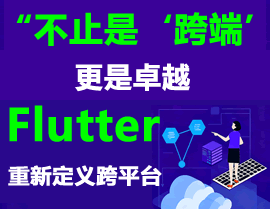在开发使用uni-app进行跨平台应用开发时,如果遇到“检测到自定义基座有更新 正在删除旧版本”的提示,这通常意味着你正在使用的自定义基座(即开发环境中的应用容器)有更新,系统需要删除旧版本以安装新版本。这种情况在每次重新打包基座并编译运行时较为常见。为了优化这一过程,确保每次编译运行都能顺利进行,可以考虑以下代码案例和配置优化方法。
1. 确保基座版本与项目配置一致
首先,确保你的uni-app项目配置文件(如manifest.json)中的基座配置与当前使用的基座版本一致。这包括SDK版本、平台配置等。
{
"mp-weixin": { // 以微信小程序为例
"appid": "your-app-id",
"setting": {
"urlCheck": false
},
"usingComponents": true
},
// 其他平台配置...
"sdkConfigs": {
"uni-app": {
"nativeBase": true, // 是否使用原生基座
"custom": { // 自定义基座配置
"version": "1.0.0", // 基座版本号
"path": "/path/to/custom/base" // 基座路径
}
}
}
}
2. 自动化构建脚本
为了简化每次编译前更新基座的过程,可以编写自动化脚本。以下是一个简单的Node.js脚本示例,用于检查并更新基座,然后触发uni-app的编译过程。
const { exec } = require('child_process');
const fs = require('fs');
const path = require('path');
// 检查基座版本并更新(这里假设有一个函数可以获取最新版本信息)
function checkAndUpdateBase() {
// 模拟获取最新版本信息
const latestVersion = '1.0.1';
const currentVersion = JSON.parse(fs.readFileSync(path.join(__dirname, 'manifest.json'))).sdkConfigs['uni-app'].custom.version;
if (currentVersion !== latestVersion) {
console.log('Updating base...');
// 这里添加更新基座的逻辑,比如从远程服务器下载新版本
// ...
// 更新manifest.json中的版本号
const manifest = JSON.parse(fs.readFileSync(path.join(__dirname, 'manifest.json')));
manifest.sdkConfigs['uni-app'].custom.version = latestVersion;
fs.writeFileSync(path.join(__dirname, 'manifest.json'), JSON.stringify(manifest, null, 2));
} else {
console.log('Base is up to date.');
}
}
// 执行编译命令
function compileApp() {
exec('npm run dev', (error, stdout, stderr) => {
if (error) {
console.error(`exec error: ${error}`);
return;
}
console.log(`stdout: ${stdout}`);
console.error(`stderr: ${stderr}`);
});
}
checkAndUpdateBase();
compileApp();
3. 清理旧版本
在更新基座后,可以手动或在脚本中添加清理旧版本的逻辑,确保不会残留无用的文件占用空间。
通过上述配置和脚本,可以优化自定义基座更新流程,减少每次编译运行时的重复操作,提高开发效率。







